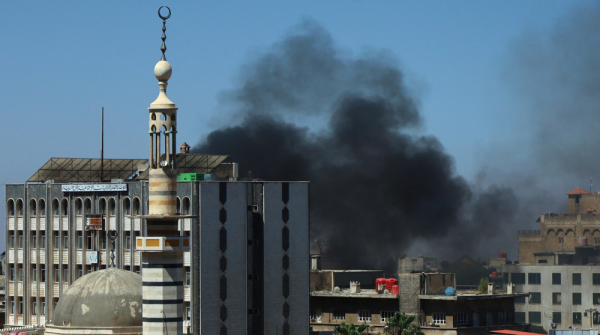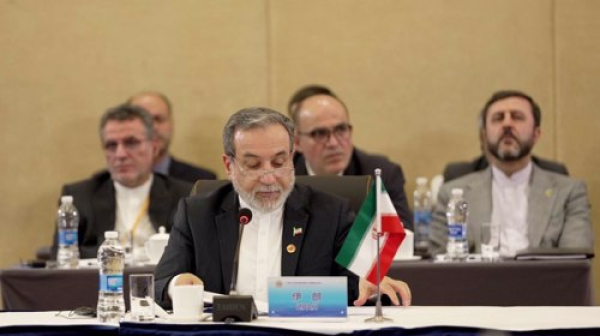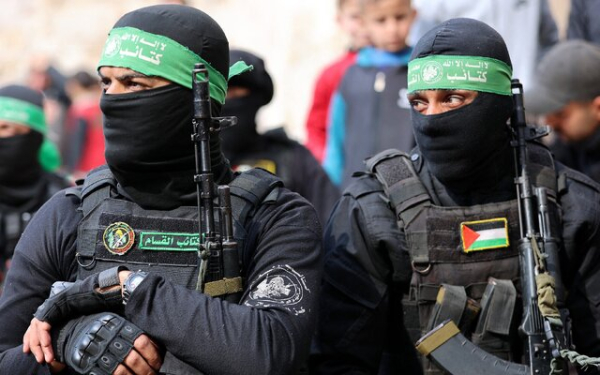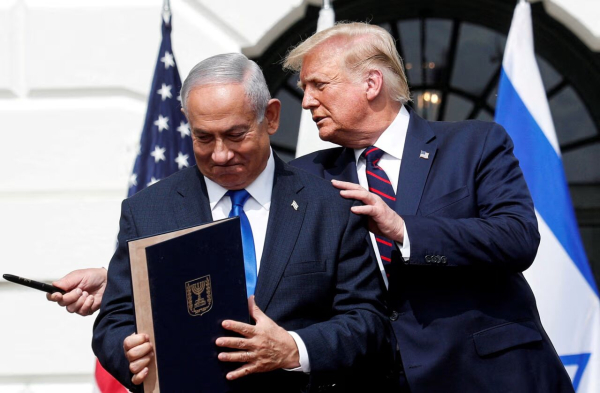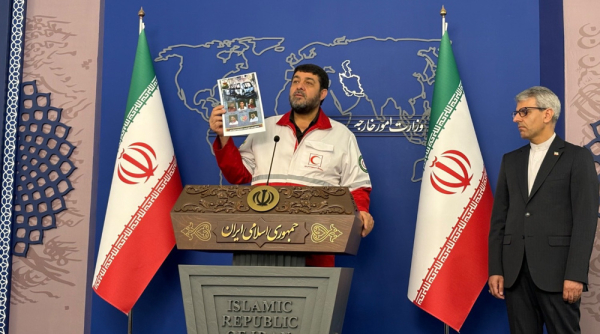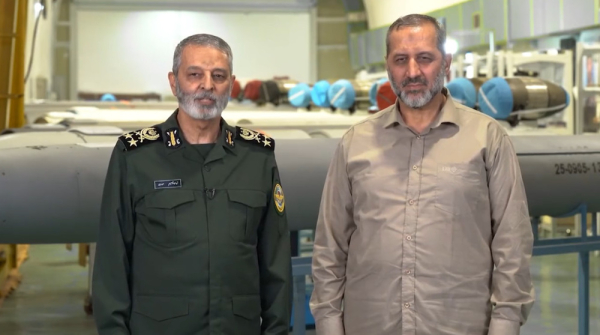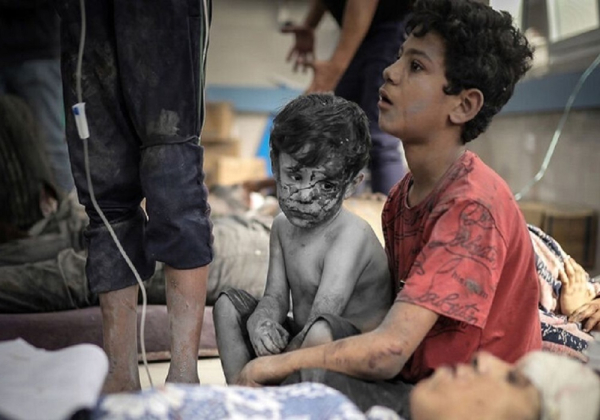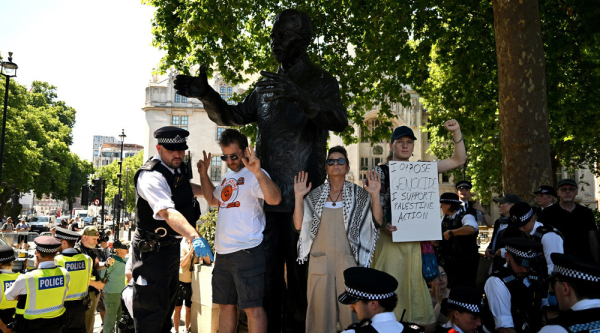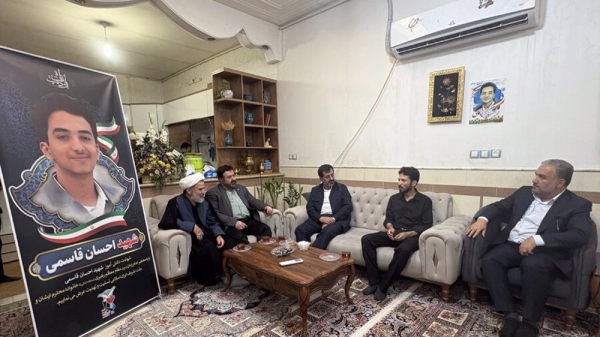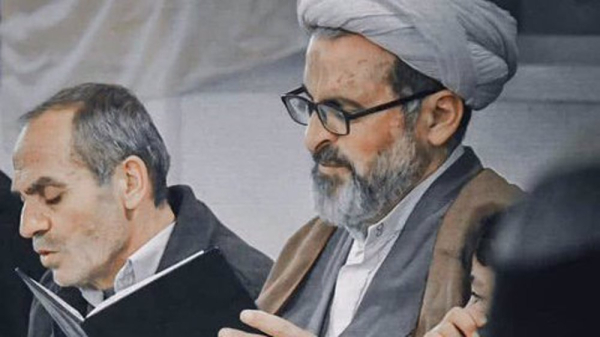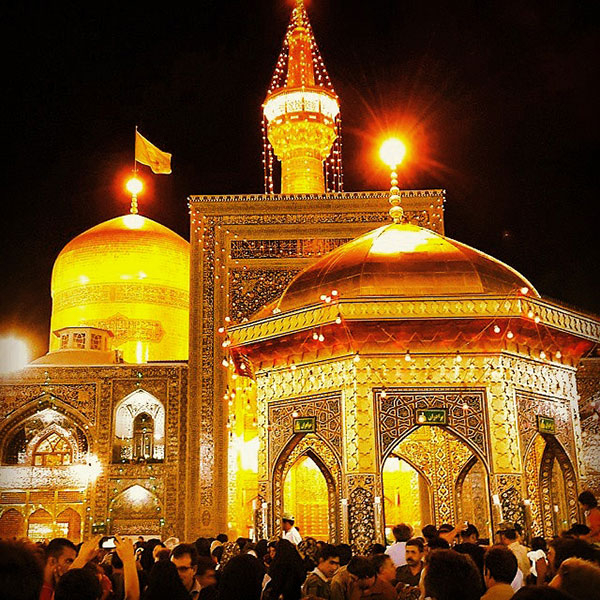zarezadeh
Iran condemns deadly Israeli airstrikes in southern Syria
Tehran has expressed deep concern over the recent clashes in the Suwayda region in southern Syria and condemned the Israeli attacks on the Arab country over the past two days.
Esmaeil Baghaei, the spokesman for the Iranian Foreign Ministry, pointed to the continued military aggression by Israel against Syria’s territorial integrity, coinciding with the ongoing occupation of a large part of Syrian territory.
He described the continued inaction of the United Nations Security Council regarding the aggressive actions of the Zionist regime against regional countries as 'extremely dangerous' and as fueling the escalating boldness of the occupying regime.
Baghaei emphasized the necessity for countries in the region and the Islamic world to act urgently to stop the violations and crimes committed by the Zionist regime, including its unprecedented genocide in Gaza and ongoing attacks against Syria and Lebanon.
He emphasized the international community's responsibility to prevent further severe violations of international law and the UN Charter.
The Druze-majority city of Sweida in southern Syria has been a scene of clashes since Sunday between factions from the Druze religious minority and Bedouin tribes, killing more than 100 people.
The two sides have a longstanding feud in Sweida.
Syria's unelected HTS regime has deployed its forces in a bid to extend its power to the area controlled by local armed groups.
Iran calls on SCO to take urgent action over recent Israeli aggression
Iran’s Foreign Minister Abbas Araghchi has called on the Shanghai Cooperation Organization to promptly review the situation regarding the recent Israeli aggression against Iran, urging the body to adopt measures offering Tehran essential political backing and related support.
Speaking at the meeting of the Council of Foreign Ministers of the SCO held in China on Tuesday, Araghchi submitted several proposals by Iran aimed at enhancing the effectiveness and standing of the organization.
He proposed “establishing a permanent mechanism to monitor, document, and coordinate responses to military aggression, acts of sabotage, state-sponsored terrorism, and violations of member states' national sovereignty.”
He also called for creating a “Center for Sanctions Studies and Countermeasures" tasked with developing operational strategies to combat unlawful unilateral sanctions, safeguard supply chains, protect banking systems, and secure trade exchanges among member states.
The top Iranian diplomat also requested forming a "Shanghai Regional Security Forum" with the participation of defense and intelligence institutions from member states to address shared threats such as terrorism, extremism, organized crime, and cyber threats.
Araghchi called on the SCO to strengthen media and cultural integration among member states as a tool to counter perception warfare and one-sided narratives promoted by the media of hegemonic powers.
Key bilateral meetings
On the sidelines of the SCO meeting, Araghchi had a meeting with Chinese President Xi Jinping Tuesday morning, accompanied by other foreign ministers from the organization.
Before the group gathering, Araghchi and Xi also engaged in a short bilateral discussion.
The Iranian minister also held talks with his Russian counterpart Sergei Lavrov on regional and international issues.
The Russian side once again reiterated the importance of resolving the issues surrounding Iran's nuclear program solely through political and diplomatic means, and in accordance with international law.
Araghchi also held talks with his Pakistani, Uzbek and Kyrgyz counterparts, Muhammad Ishaq Dar, Bakhtiyor Saidov and Jeenbek Kulubayev, respectively.
In a post on his X account released on Tuesday, the Pakistani foreign minister hailed the meeting and said, “Good to catch up with Foreign Ministers of Iran, Uzbekistan, and Belarus on the sidelines of the SCO CFM in Beijing, just before our joint call on Chinese President Xi at the Great Hall of the People in Beijing.”
He added that it is always good “to exchange views for strengthening regional understanding and cooperation in such a challenging time.”
Araghchi also held a phone conversation with Malaysia’s Foreign Minister Mohamad Hasan.
During the call, the top Iranian diplomat referred to his recent meeting with Malaysian Prime Minister Anwar Ibrahim on the sidelines of the BRICS Summit in Rio de Janeiro.
He underscored Iran’s commitment to follow up on mutual agreements regarding the development and expansion of bilateral relations.
The two sides expressed their desire to continue talks and consultations on bilateral relations and key developments in the West Asia region.
The top Malaysian diplomat highlighted his country’s interest in strengthening Tehran-Kuala Lumpur relations.
He also invited his Iranian counterpart to visit Malaysia at an appropriate time, which Araghchi welcomed.
The 25th Meeting of the Council of Foreign Ministers of the Shanghai Cooperation Organization began on Tuesday in the Chinese port city of Tianjin.
The main objective of this two-day meeting is to review the latest political, security, and economic developments in the region as well as key priorities, including enhancing security cooperation against terrorism, supporting multilateralism, boosting regional trade, and expanding the organization's role in Eurasian geopolitical arrangements.
Press TV’s website
Al-Qassam's new tactics on the battlefield
How a 46-year American-Israeli ‘regime change’ project in Iran crumbled in 12 days
By Ivan Kesic
Former Israeli military affairs minister Yoav Gallant’s letter to Leader of the Islamic Revolution Ayatollah Seyyed Ali Khamenei reads less like a victory lap and more like a plea for forgiveness.
Titled "Your Nuclear Dream Has Failed. Now You Must Choose," the letter was published on his Substack account and quickly amplified by Israeli media outlets and Western news agencies.
Gallant, who served as the regime’s war minister from 2022 until his dismissal in November 2024, had fallen out with Benjamin Netanyahu over policy disputes, particularly on the issue of the return of Israeli captives held in Gaza.
During his tenure, Gallant oversaw 14 months of devastating genocidal war on Gaza, which led the International Criminal Court in 2024 to issue arrest warrants for both him and Netanyahu on charges of war crimes and crimes against humanity.
Now under legal scrutiny and political exile, Gallant attempts to reframe his maligned legacy.
Yet his letter is laced with exaggerated claims recycled from Tel Aviv’s propaganda playbook during its failed military aggression against Iran, a campaign that not only failed to achieve its objectives but proved devastatingly counter-productive for the regime.
Boasts, threats, and a veiled ultimatum
In his open letter, Gallant painted an overly exaggerated – and at times fantastical – picture of Israel’s so-called military and intelligence supremacy over Iran.
“We see everything. We hear everything. We are everywhere,” he wrote, claiming that the Israeli regime has deep insight into Iran’s inner workings — including the Leader’s schedule, secure sites, communications, and even so-called “blind spots.”
He went as far as saying, “We knew more about you than you knew about yourselves.”
Gallant claimed that Iran’s so-called “Ring of Fire” strategy, built around Axis of Resistance allies like Hezbollah, Hamas, and other regional partners, had collapsed due to a coordinated Israeli-American military plot.
He also linked to Hamas’ October 7, 2023, historic operation, claiming that Iranian arms, training, and funding played a central role in the operation that changed regional dynamics.
The former military affairs minister also claimed that Israel had destroyed Iran’s air defenses, conducted overflights of Tehran as if it were Tel Aviv, assassinated senior Iranian commanders and nuclear scientists, and delayed Iran’s nuclear program by several years.
Toward the end of the letter, Gallant presented what he described as three stark choices: Attempt to rebuild the Axis of Resistance, a move he said would be swiftly dismantled. Accelerate nuclear development, which he warned would trigger even greater retaliation. Or negotiate, a path Gallant doubted Iran was prepared to take.
Likudnik delusions
Gallant’s open letter provides a glimpse into delusions held by the Israeli regime, particularly among its Likud leadership, about the realities on the ground across the region.
These delusions, echoed regularly by Netanyahu, paint a triumphalist narrative that stands in stark contrast to facts acknowledged even by Israeli analysts and opposition politicians.
The first and most glaring illusion is the claim of an Israeli "victory" over the Axis of Resistance. It is not only strategically premature but widely disputed by military and political observers.
Leader of the Islamic Revolution has often dismissed the idea that resistance has ended as a "totally wrong impression." In speeches late last year, he reminded audiences that “the spirit of Sayyed Hassan Nasrallah and Yahya al-Sinwar is alive, and their martyrdom did not take them out of the arena,” noting that “their souls, thought, and path shall continue.”
"Gaza is facing daily attacks and offering martyrs, but it is still resilient and resisting, and also Lebanon is resisting," Ayatollah Khamenei said in one of his speeches.
"Hezbollah is alive, thriving, and fulfilling its historic role. As always, the Islamic Republic will continue to support the mujahideen of Quds and those resisting the usurping criminal gang’s occupation of Palestine, God willing," he added.
And the events on the ground today – from Gaza to Tehran – corroborate his words.
Despite years of rhetoric from Netanyahu, who repeatedly declared “Hamas is dead,” the resistance in Gaza remains fierce. Recent incidents in Gaza have inflicted substantial losses on Israeli regime forces, and the resolve among Palestinians has only deepened under siege.
Similarly, after Israeli airstrikes assassinated senior Hezbollah leaders in 2024, Tel Aviv hoped the group would collapse or retreat. Instead, Hezbollah's capabilities remain largely intact. Its arsenal is safely housed in a vast network of underground bunkers, cleverly dispersed to avoid concentrated destruction and ensure survivability.
Gallant’s claim that Hezbollah is nothing more than “an Iranian strategic reserve” to be deployed at Tehran’s whim is part of a long-running myth that all regional resistance movements are mere Iranian proxies.
Hezbollah is first and foremost a Lebanese resistance movement, born out of the 1982 Israeli invasion of Lebanon, and its mission is primarily national: defending Lebanon from repeated Israeli aggression, as has been witnessed over the years.
During the recent war imposed on Iran, it didn’t need the intervention of its regional allies, including Hezbollah. Tehran defended itself directly using its own advanced missile and drone capabilities – a clear message that it can respond independently and decisively.
The claim that Sayyed Hassan Nasrallah “sought permission” to enter the war also fails the fact-check, contradicted by Hezbollah’s clearly stated goal: providing calibrated support to Palestinian resistance while avoiding wider escalation unless absolutely necessary.
Gallant’s portrayal of the so-called “Ring of Fire” – extending to Iraq, Yemen, and Syria – similarly distorts reality. Iraqi and Yemeni resistance factions remain active and engaged.
His reference to Syrian “realignment” is equally misplaced, as Damascus has not even played an operational role in the current situation. It has been totally out of the picture.
Fantasy of ‘victory’ over Iran
Gallant’s interpretation of the recent war imposed on Iran reads like a recycled press release from the failed Israeli psychological warfare campaign, a patchwork of tired propaganda, disinformation, and wishful thinking.
Among the most bizarre claims is the assertion that Israel achieved “air superiority” over Tehran. Iran was targeted by long-range air-to-surface missiles launched from American bases in Iraq, cruise missiles, sabotage drones, and covert explosions, not from manned aircraft piercing Iranian airspace, as the evidence reveals.
In one of the more theatrical deceptions, Israeli agents reportedly set tires ablaze near Tehran to simulate the aftermath of airstrikes, fabricating the illusion of stealth bomber attacks.
But the evidence on the ground tells a different story: limited structural damage consistent with small drone warheads, not the kind of devastation caused by bunker-busting bombs dropped from fighter jets.
Stealth jets may evade radar, but they do not evade the human ear. Their engines are thunderous, and yet over Iran’s densely populated cities, there were no reports of the roar associated with such aircraft, only the eerie whine of incoming cruise missiles or drones.
Iranian counterintelligence quickly dismantled the sabotage infrastructure that Israel had spent years constructing. Improvised drone workshops, clandestine operatives, and networks of informants were exposed and neutralized within days.
This rapid unraveling not only blunted the offensive but revealed the exaggerated nature of Israeli intelligence capabilities. Gallant’s narrative inflates these operations into a masterstroke when in reality, they were fleeting and largely ineffective.
Even more brazen is Gallant’s open celebration of the assassination of Iranian scientists, many of whom were not covert figures involved in secret military projects, but respected academics, public lecturers, and contributors to open scientific research.
Their addresses were no state secret. Their deaths were acts of terrorism, not tactical victories.
Gallant’s grandstanding closely mirrors the discredited claims made during the October 2024 campaign, when Israeli officials announced they had crippled Iran’s air defenses, missile production facilities, and nuclear infrastructure.
These claims were swiftly debunked by Iran’s successful retaliatory operations, which demonstrated both capability and strategic depth.
The June 2025 Israeli aggression failed across every strategic metric. It did not halt Iran’s nuclear or missile programs. It did not deliver a blow to Iran’s military leadership. It failed to erode popular support for the Iranian government, and most critically, it did not achieve its ultimate objective: the so-called “regime change.”
End of 47-year fantasy of ‘regime change’
The Israeli regime’s recent attempt to destabilize Iran through military aggression was never truly about military victory. It was about the 46-year project of “regime change”
The strikes against Iran’s scientific and military infrastructure were half-hearted at best, signaling that even Israeli planners were well aware of their own operational limits.
What they truly sought was psychological conquest – a collapse from within.
From the outset, this was a war of perception. The disinformation blitz about so-called Israeli “air superiority” and the fabricated claims of the elimination of Iran’s leadership were classic elements of psychological warfare. The aim was not battlefield dominance, but to instill doubt and fear among the Iranian people, to make them believe their government had failed them.
The war of aggression was mirrored by a carefully choreographed media campaign in the West, where pundits and analysts spoke of the imminent collapse of Iran. The glorification of the Pahlavi monarchy began resurfacing in mainstream outlets, painting it as a golden age.
But the streets of Iran remained silent and resilient. There were no uprisings. No collapse. No disintegration. Instead, the Israeli aggression had the opposite effect.
It galvanized the Iranian public. Much like the early 1980s during the Imposed War with Iraq, the nation united under war and siege. The people’s fury was not turned inward at their leaders, but outward at the regime dropping bombs on their cities.
This wasn’t just a tactical failure. It was the dramatic unraveling of a strategic ambition 46 years in the making. The plot hatched in Tel Aviv and Washington had fallen apart.
Since the 1979 Islamic Revolution, the American-Israeli axis has aggressively pursued regime change in Iran through sabotage, sanctions, covert operations, proxy wars, and media warfare.
The goal has always been clear: install a puppet regime that would dismantle Iran’s military, scientific, and economic sovereignty, and fold the country into the architecture of Western hegemony, just like it was before 1979.
Such a transformation would grant the US and Israel undisputed control over regional energy corridors, military balances, and strategic chokepoints, without a serious rival.
It would erase the Islamic Republic as a political model, a cultural pole, and a geopolitical obstacle and allow the Israeli regime to carry out its expansionism without any barriers.
From Menachem Begin and Ariel Sharon to Benjamin Netanyahu and Yoav Gallant, the torch of this “regime change” fantasy has been passed down through decades of Israeli leadership.
Figures like Yossi Cohen and Giora Eiland gave it shape through intelligence and diplomacy. But the fantasy has always crashed into the same wall: Iranian resilience.
The Islamic Republic has survived because of an enduring national will that has confounded even the most sophisticated operations, which was again on display during this war.
The so-called “opposition” remains fragmented, foreign-funded, and widely discredited. Military and intelligence options have failed repeatedly, and propaganda campaigns fall flat.
The 2025 aggression, with Gallant as its public face, may be the most overt and desperate iteration of the regime change strategy to date. Yet it ended with Gallant penning an open letter to Iran’s Leader, echoing a plea for negotiation.
The letter is a quiet admission of defeat and submission. His call for talks, wrapped in the language of threats, reveals the bitter truth: regime change has failed once again. And this time, the 46-year-old fantasy has been nipped in the bud.
Press TV’s website
Israel’s assaults disproportionately hit civilians, not combatants: Iranian Red Crescent
Iranian civilians, rather than combatants, suffered the most casualties during Israel’s aggression against the country, according to the head of the Iranian Red Crescent Society (IRCS).
“The greatest harm has been inflicted on civilians. Among the martyrs are 126 women and 41 children—none of whom were combatants,” Pirhossein Kolivand said during the weekly press conference of Foreign Ministry spokesperson Esmaeil Baghaei on Monday.
“Five of our relief workers were martyred after being directly targeted,” he said, adding that the ambulance “was also set on fire.”
Violation of the Geneva Conventions
According to Kolivand, a Red Crescent’s helicopter was also targeted in an outright breach of the Four Geneva Conventions.
“No one has the right to attack medical personnel or civilians. Our mission is search and rescue; we exist to aid the people, yet we were deliberately obstructed and attacked,” he said.
He explained that Iran has submitted “reports to the International Committee of the Red Cross (ICRC), the Human Rights Council, and the Prosecutor of the International Criminal Court.”
He said the ICRC representative in Iran accompanied him to Evin Prison, targeted on June 23, and Hamedan city, where food factories were bombed.
“The intensive care unit of Farabi Hospital was also attacked—I showed them all this evidence, emphasizing that these are clear violations of the Geneva Conventions,” he stressed.
Over the 12-day war, “every conceivable form of atrocity” was committed against the Iranians, he said, adding, “many of my international counterparts have reached out to express solidarity and denounce” the Israeli aggression.
Red Crescent headquarters targeted twice
“Our headquarters was directly attacked twice. Globally, medical facilities are marked with ‘No Honking’ signs—yet here, they were hit with missiles, spreading terror,” Kolivand continued.
He added that the world must recognize this, asking, “is there any crime worse than this?”
On June 13, Israel launched a blatant and unprovoked act of aggression against Iran, assassinating many high-ranking military commanders and nuclear scientists.
The Israeli attacks also targeted military and nuclear sites as well as vital non-military infrastructure, including a building of the Islamic Republic of Iran Broadcasting (IRIB), Evin Prison, healthcare centers, outreach facilities, and both residential neighborhoods and rural communities, inflicting widespread civilian harm. These attacks also caused over 900 civilian fatalities.
In response, the Iranian armed forces, led by the Islamic Revolution Guards Corps (IRGC), launched a powerful and unprecedented retaliatory campaign, Operation True Promise III, against the Israeli regime, using many of its domestically developed new-generation missiles for the first time.
Hundreds of Iranian ballistic missiles and drones overwhelmed Israeli air defenses and struck key military, intelligence, industrial, energy, and R&D facilities across the occupied Palestinian territories.
On June 24, the Israeli regime, isolated and abandoned, declared a unilateral halt to its aggression, announced on its behalf by US President Donald Trump.
Press TV’s website
Iranian missiles severed enemies’ hands; stronger response awaits any misstep: Top cmdr.
Iran’s top military commander has lauded the country’s aerospace forces for the highly effective missile counterstrikes they conducted against the nation’s adversaries last month, warning that any repeated mistake would be rewarded with an even stronger response.
Major General Abdolrahim Mousavi, chief of staff of the Iranian Armed Forces, made the remarks on Monday, visiting the facilities and servicemen of the Islamic Revolution Guards Corps (IRGC)’s Aerospace Force.
“It was the sharp sword wielded by the Aerospace Force that, through divine assistance, managed to cut off the enemies’ heads and their hands,” the commander said.
Intense Israeli airstrikes targeted the Islamic Republic between June 13 and 25, prompting the country to launch rapid and forceful counterattacks.
This reprisal, known as Operation True Promise III, focused on striking vital Israeli military, intelligence, and industrial targets, inflicting significant damage. Iran then struck al-Udeid, the most important American airbase in West Asia, after the United States entered the fray by attacking Iranian nuclear sites.
The commander said the Aerospace Force’s retaliation far surpassed its counterstrikes during the Iraq-imposed war in the 1980s.
Elsewhere in his remarks, he reassured the entire nation that “if the enemy makes another mistake, our servicemen stand fully prepared to deliver a regret-inducing and stronger response.”
Fingers on trigger: Aerospace Force cmdr.
Accompanying the official, the Aerospace Force’s Commander, Brigadier General Majid Mousavi, produced a report on True Promise III. The document detailed the operation’s achievements for the Iranian nation and the level of coordination that was observed among the force and other significant military sectors throughout the retaliation.
“By God’s grace and in line with the directives that have been issued mandating ‘keeping fingers on the trigger,’ we are still prepared to confront any miscalculation and potential act of adventurism on the part of the enemy.”
Press TV’s website
Targeting of Gaza’s children: A systematic campaign of war, starvation
In Gaza, children are not collateral damage—they are the target. As Israel’s war enters its 21st month, overwhelming evidence reveals a systematic campaign of genocide in which Palestinian children are being deliberately killed, starved, and maimed through both direct military strikes and the weaponization of deprivation. Ghada Ebrahim reports.
British police arrest dozens in London rally against Palestine Action ban
The British police have detained dozens of protesters for supporting the pro-Palestinian campaign group, Palestine Action, a week after the UK government officially designated the activist group a “terrorist organization.”
The Metropolitan Police said in a post on X on Saturday that its forces have arrested 41 people for expressing support for “a proscribed organization,” adding that another person was taken into custody on charges of common assault.
They later said in a mid-afternoon update that the area was cleared.
Earlier in the day, the Met said a statement on X that “We are responding to a protest in support of Palestine Action,” adding that “Officers are in the process of making arrests.”
This came after a group of protesters gathered at the steps of the Mahatma Gandhi statue in Parliament Square, defying a warning from the Metropolitan Police, who stated that they would take action against anyone showing support for the banned group ahead of the planned protests.
Grieving parents donate son’s future fund to boost Iran’s missile defense after Israeli aggression
Grieving parents of a teenage martyr from the recent 12-day Israeli aggression against Iran have donated their son’s future fund to the nation’s Armed Forces to bolster missile production in defense against the illegal Israeli entity.
In a live broadcast on Qom Province’s TV channel, Ehsan Qasemi’s father revealed that the family’s donation, valued at tens of thousands of dollars, was initially intended for his late 16-year-old son’s future career.
Following the young martyr’s untimely demise, however, the family has chosen to redirect these funds towards improving Iran’s missile defense capabilities.
“[The gift] is well expected to become one missile or two to strike the heart of Tel Aviv and have these roguish Zionists suffer their deeds,” Qasemi said.
“Our goal is to pay a small debt to the blood of the martyrs and to express gratitude to the Armed Forces,” he added.
Ehsan was martyred in the early hours of June 20 as a result of the Israeli regime’s strike on a residential building in the Salarieh District of Qom.
The four-story building was where the Islamic Revolution Guards Corps (IRGC) commander Brigadier General Mohammad Saeed Izadi lived, who was also killed in the Israeli aggression.
On June 13, Israel launched a blatant and unprovoked aggression against Iran, assassinating many high-ranking military commanders, nuclear scientists, and ordinary civilians.
More than a week later, the United States also jumped on the bandwagon and bombed three Iranian nuclear sites in a grave violation of the United Nations Charter, international law, and the Nuclear Non-Proliferation Treaty (NPT).
In response, Iranian armed forces targeted strategic sites across the occupied territories as well as the al-Udeid air base in Qatar, the largest American military base in West Asia.
On June 24, the regime declared a unilateral ceasefire without any preconditions, a sign of its defeat in the face of powerful and unwavering Iranian retaliation.
Press TV’s website
Hezbollah: Sheikh Shahoud’s murder meant to undermine Syria’s unity, integrity
The Lebanese Hezbollah resistance movement has strongly condemned the assassination of prominent Shia cleric Sheikh Rasoul Shahoud in an attack in Syria’s central province of Homs, describing it as a heinous act aimed at destroying Syria's unity and creating turmoil and insecurity in the Arab nation.
Hezbollah said in a statement on Saturday that the targeted killing perpetrated by criminal and treacherous people was also meant to ignite sectarian and religious strife among various strata of the Syrian society.
The group further noted that the grave crime targeted a scholarly and religious figure who devoted his whole life to serving Islam and Syrian society, supported young people in their educational and faith-based journeys, and was a sincere preacher of the truth, besides being a true defender of the oppressed.
“The crime requires vehement denunciation from various seminary bodies as well as scientific and spiritual institutions,” Hezbollah added.
The Lebanese resistance movement underlined the need for the persecution of the culprits and holding them to account for the atrocity.
It also demanded that anyone proven to be involved or complicit in this heinous crime must stand trial.
“We are fully confident that Syrian people will reject this extremist ideology, which threatens the unity of the society, undermines stability, and targets every moderate opinion and enlightened thought,” Hezbollah pointed out.
The security situation in Syria under the Hay’at Tahrir al-Sham (HTS) - an offshoot of the al-Qaeda terrorist group - remains tenuous.
Incidents of sectarian violence, including the massacre of hundreds of Alawites in March, have hardened fears among minority groups about the now dominant militants.
Since Bashar al-Assad’s government collapsed on December 8, 2024, Syria has also been plagued by a widespread Israeli occupation across large swathes of the country’s south.
It has also been hit by hundreds of Israeli airstrikes, mainly targeting military installations, facilities, and arsenals belonging to Syria’s now-defunct army.
Israel has been widely condemned for the termination of the 1974 ceasefire agreement with Syria, and for exploiting the chaos in the Arab nation in the wake of Assad’s downfall to make a land grab.
The United Nations has condemned ongoing Israeli attacks inside Syrian territory and continued violations in and around the buffer zone created as part of the 1974 agreement with Damascus.
Pres
